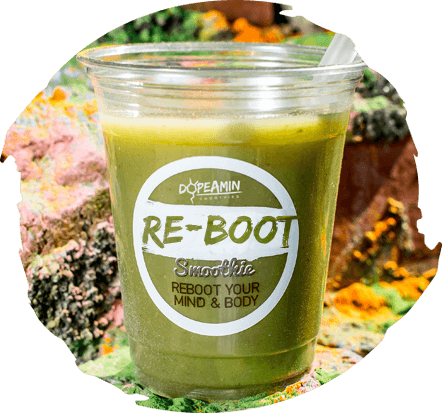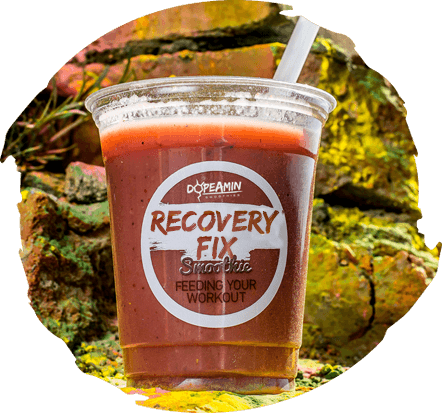
Time to roll up the sleeves & tuck into the nitty, gritty delights of ‘Nutrients’. So, what’s this nutrient hype all about? remember A car needs fuel to run, same as our mind & body, we rely on fuel to operate in a slick, smooth sorta way.

Time to roll up the sleeves & tuck into the nitty, gritty delights of ‘Nutrients’. So, what’s this nutrient hype all about? remember A car needs fuel to run, same as our mind & body, we rely on fuel to operate in a slick, smooth sorta way.
GUIDELINES & MANAGEMENT
‘SOCIAL MEDIA’
We know social media has many positive benefits, sometimes we all have a wonky day where need to dis-connect & feel with it or be ultra-productive & focused with work.
Here’s a few fresh - side ‘guidelines & management’ brought to the street to protect our mental health.
Guidelines
Protecting chemicals in a way like no other:
1.)Prevent yourself from following other profiles who you know bring you bad memories or bad feelings.
2.)Control posting self- images of yourself with filters on a regular basis – look at creating new ways of posting constructive information what mean something of value to yourself.
3.)Posting for business/ work / constructive posts – Set a structure to daily timed posts, delete apps to reduce number of times checking your profile. Come back later to reply, comment back to others users.
4.)Sharing stories with close friends instead of a broad horizon of ‘associates’ or people you don’t know, reducing feelings of anxiety/ worry.
5.)If you enter low or enter questionable thoughts, not to turn to the news feed or social media for answers. This is an important time to dis-connect from social media.
6.)Have a Social Media detox every known again to re-boot and cleanse your mindset.
MANAGEMENT
1.)Manage your daily activity on social media apps by following 5 simple steps:
STEP 1 = Click into ‘social media app & go to settings’.
STEP 2 =Click into ‘your activity'.
STEP 3 = Click into ‘manage your time’.
STEP 4 = Aim to set your timeframe of daily use at 30 Mins per day.
Step 5 = Set yourself a goal to beat ‘Active Time’ each day/ week.
Other constructive ways to manage your online time
2.)Switch to airplane mode or turn off during work/university/ college/ school hours. Focus is everything to be productive.
3.)Delete apps during constructive, productive time which requires your full concentration and attention.


Why do strong healthy fresh foods make us feel ‘DOPE’?


They contain two vibrant characters called ‘Macronutrients & Micronutrients’ who only want to get the best out of you mentally and physically helping you focus, develop, strive with purity, productivity and energy creating a clear focused positive state of mind. Let’s break the ‘Macro & Micro’ nutrient shenanigans into smithereens.

‘MACRO’ NUTRIENTS
The big hitters for a high % of our food source. The three amigos:
Macro’s direct role is to supply the engine room with fuel aka calories and energy.
PROTEIN
Protein’s role on the body is more than just piling down more meat than Ronnie Coleman’s right gun to look like the local carpet fitter! Proteins are made up of members from a chain -gang called ‘Amino – Acid’.
They are split into two: ‘Essential Amino–Acids and non-Essential Amino Acids’. The first is called non-essential because your body can make these so it is not as important to get them through your diet. HOWEVER, the Essential amino acids are rather important to pay attention too. They are called essential because your body is not able to make these amino acids meaning it is important that you are getting these in your diet. Essential Amino acids contain specific roles in the body – absorbing protein from macronutrients we eat, which help maximise the growth and development process on our body. But in modern day times we’re now seeing the benefits amino acid chains have on the state of the mind.
ESSENTIAL AMINO–ACIDS
Out of the 20 amino acids – 9 are essential and required for normal health/growth. You will find these guys in different food sources. ✔ This Amino acid is needed for building collagen, antibodies, and hormones. ✔ This Amino acid is the sole responsibility of preserving muscle in the body. ✔ Needed to heal injuries and helps out your immune system. ✔ This essential Amino acid helps build back broken tissues. ✔ Amino acid helps the functioning of the nervous system disorders. ✔ Used to balance nitrogen in the body. ✔ Produces the building blocks for a strong functioning body. ✔ Phenylalanine and histidine.
Healthy Protein Sources Include:
✔ Lean meats such as chicken, fish and turkey ✔ Beans, pulses and legumes ✔ Green veggies, peas, broccoli ✔ Nuts and seeds ✔ Sweet potato
IMPACT ON THE MIND
✔ Creates building blocks through amino acid chains to manufacture happy chemical releases ✔ Dopamine & norepinephrine chemicals keep you energised & promote alertness & activity
IMPACT ON THE BODY
✔ Increases muscle mass & strength ✔ Helps maintain weight loss ✔ Boosts metabolism & increases fat burning ✔ Reduces appetite & hunger levels ✔ Helps your body repair itself after injury
CARBOHYDRATES
The body’s favourite type of energy and most commonly used fuel source. In other words they’re on the rubber dingy rapids with Lewis Hamilton’s fan-belt. They keep our brain & bod in the fast lane beating on our craft daily!
Quick Back 2 basics lesson – Carbs are broken down into sugars (called glucose) by the body’s digestive system, which are then ready to be absorbed into the bloodstream. A hormone called insulin is then released, insulin is needed to move sugar from the blood into the cells, where sugar can be used as energy to help run the body.
COMPLEX CARBS AKA THE ‘GOOD’ stuff
Complex carbs are the good carbs. They are high in fibre, digest slower, making them more filling and provide the body with prolonged lasting energy. They are known to slowly release glucose (sugar) throughout the day and keep your blood sugar levels stable. Making them a more reliable and trustworthy source of energy to keep you fuelled throughout the day. Found in food such as brown rice, grains, oats and much more. How much should you be eating? Carbohydrate intake differs dramatically between everyone. The best way to find out how many carbs you need is to go off the size of your own hands. One fist is the amount of carbohydrates you should be eating per meal. For example, 1 fist size jacket potato, however much broken rice to make a size of your own fist and so on.
SIMPLE CARBS AKA THE ‘BAD’ stuff
Simple carbs are sugars in their simplest form. Although some occur naturally in milk and fruits, most simple carbs are processed, man made and have little to no fibre or any nutritional benefits. Things like sweets, sugary drinks, biscuits and pastries. This type of simple carb sends high spikes in blood sugar and causes serious mood and energy crashes. which create havoc for our stress hormones as spikes lead to lows which causes us to feel unmotivated, over eat, put on excess weight and body fat. Excessive added sugar is also associated with many physical health problems such as obesity, heart disease and increased cancer risk. Simple sugars can be hidden in a lot of foods which is why it is super important to check the labels of the foods you’re eating! See if you can cut down the amount of free sugars you eat everyday and watch how your mood and energy levels will increase!
Impact on the mind – complex carbs
✔ Stability in mood ✔ Improved sleep ✔ Brain function – connection with happy chemical releases to the brain
Impact physically – complex carbs
✔ Preferred Energy source ✔ Lower risk of heart disease ✔ Provides other nutrition to the body ✔ Helps digestion
FATS
Hold tight for a second. You may want to get a de-fib on standby for what’s about to be announced. FAT IS ‘DOPE’! Now you’ve done a couple of back flips, had a cardiac arrest. Let’s get suited and booted for a day out at the fat zone!
GOOD FATS
Good fats are called monounsaturated and polyunsaturated fat (aka unsaturated fats). Their tag is ‘good’ because they have a positive impact on the heart, cholesterol and overall health to give you a huge kick of development up the gluteus maximus mentally & physically. Mentally, fats are regarded as the ultimate brain box food, which include avocado, nuts, olive oil, flaxseed, chia seeds and infact all sorts of seeds! How much should I have a day? Using your hands again will help you find out how much your body needs! 1 handful of nuts/ seeds a day!
From a fuel perspective to our brain, good fats create sharpness, alertness, improved memory and moods, cognitive behaviour improvement. Producing high performance moments when in the zone studying, working, learning all to benefit your future earnings!
BAD FATS
The love /hate relationship – the short-term sensation of pleasure and satisfaction, versus the long term mental and physical decline. There are two types of ‘bad fats’ you want to keep your eye out for. These little rascals like to hide a lot in processed food which makes it hard to see!
Saturated fats. The fat you see on red meats like cuts of beef, pork and lamb. It is also high in dairy foods like butter, cheese and tropical oils like coconut and palm oil. Basically anything that is a solid at room temperature is going to be in high in saturated fats. Saturated fats have been shown to damage your super important blood vessels by building up and restricting the flow into your heart. This increases the risk of heart disease, stroke and cancer. The nutrition recommendation states you should not be having more than 2 portions of red meat a week! See if you can swap sausages for leaner, less harmful sources of foods which are low in saturated fat like beans, pulses and legumes! How much should I have a day? When it comes to saturated fat a little bit is ok. No more than the size of the top of your thumb per meal! Trans- fats cover foods like fries, deep fried fast foods, doughnuts, baked goods and snack foods like crisps. Trans-fats means that the chemical composition of the fat has changed because it has been heated so your body is no longer able to recognise it so it decides to store it unnecessarily! These are notably known as the worst types of fats with no nutrient value to positively impact the brain and body. Trans-fats contribute to weight and body fat, not to mention the post-effect lethargic, depleted tiredness feeling. They are basically dud nutrients which offer no positive contribution to feeling on our A-game. How much should i have? Trans-fats you should look to consume as little as possible throwing a ‘cheat meal’ in your weekly routine is always a nice treat to look forward to!
Impact on the mind-Good Fats
✔ High in omega 3 fatty acids which are essential to brain health & reduce inflammation ✔ Help produce happy chemical releases to the brain like serotonin and dopamine ✔ All round better brain function, sharpness, alertness and thinking patterns
IMPACT ON THE BODY-GOOD FATS
✔ Boosts your immune system, helping fight bacteria & viruses ✔ Good for your heart FUNCTIONing ✔ Protects the body’s internal organs and keeps you warm ✔ Needed to be able to absorb vitamins A,D,E & K

VITAMINS
Vitamins are so important they nearly cover the whole alphabet. Vitamins are essential for health, growth and nutrition. The majority of the vitamins you need have to come from the food you eat daily. This is because the human body does not produce enough or it does not produce any at all!
A-
Supports your immune system to fight off the threat of illness.
VITAMIN ‘B’ CLUB = B1, b2, b3, b5, b6, b7, b9, b12
Regulate (operates) everything that is going on inside you. These are pretty important players to understand and implement in your daily diet!
C-
Big player in functions of the body, like production of collagen also releasing chemical messages to the brain like dopamine, serotonin etc. Kills antioxidants to reduce risk of some cancers with a positive impact on tendons, ligaments, skin, cartilage and bones.
D-
Maintains strong bones and teeth, also supporting the health of the immune system, brain function. Not to mention a little helping in hand regulating the sugar hormone insulin to aid in diabetes management.
E-
Supports healthy hair and scalp, being a natural antioxidant to improve hair quality and growth.
K-
Helps keep blood pressure low by preventing a mineralization, where minerals build up in the arteries. Aiding the heart to pump blood freely through the body.
How to get your vitamins in: They come from foods like grains, fruits, vegetables, nuts & seeds. The most powerful source being your fruits and vegetables Daily target for fruits & vegetables = a minimum of 5 DIFFERENT TYPES A DAY! 2 Coming from fruit 3 coming from vegetables. Think about it like eating the rainbow. Every colour represents different amounts of vitamins. Here are the colours: ✔ RED (tomatoes, red pepper, cherries, strawberries, raspberries) ✔ ORANGE (oranges, carrots, orange peppers) ✔ YELLOW (yellow pepper, melon, bananas, pineapple) ✔ GREEN (spinach, broccoli, peas, celery, cucumber)
MINERALS
AV YOU GOT THE MINERALS?!
Minerals are chemical elements that are formed naturally in the earth and are essential to keep our bodies functioning. Therefore we need to be on point with fresh healthy foods like fruit, veg, herbs and spices. Minerals and vitamins are life’s little gifts to be the master of your own engine room. This is how we enhance our performance, whilst shielding away the threat of bacteria, giving the body loads of antioxidants which stop the damage of free roaming radicals. In other words, they keep us on top form.
The combination of good macronutrients like protein, complex carbs, good fats and micronutrients found in fruits. veg, herbs and spices supply us with the correct portion of minerals. Certain foods contain different proportions of different minerals and each mineral has an important and specific role in the body.
MEET YOUR MINERALS
✔ Calcium
✔ Potassium
✔ Sodium chloride
✔ Phosphorus
✔ Magnesium
✔ Iron
✔ Zinc
✔ Copper
✔ Sulfer
✔ Fluoride
✔ Chloride
✔ Selenium
✔ Manganese
✔ Molybdenum














